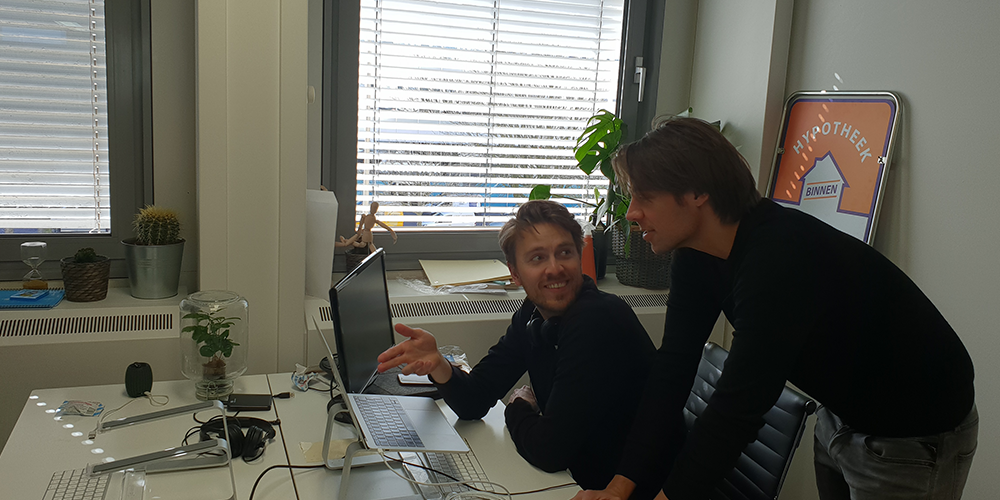In our new ‘Raising Funding for Your Startup’ blog series, we’re taking you through six steps of raising funding. In this fourth blog, find out how to talk to the right investors, and read more about the importance of timing, transparency and team spirit.

The Right Investors
When is the right time to ask?
Generally, business angels do not want to be seen as walking bags of money. Rather, they want to be viewed as experienced individuals, who can help you grow your business and make your dream of becoming a successful entrepreneur a reality. Always keep this in mind. If you start asking for their money too soon, they might lose interest. The golden rule is: “If you ask for money, you will only get advice. If you ask for advice, you might get money”.
So how should you approach asking for funding? You need to see the potential investor as part of your team; as if they would be on your advisory board or non-executive board. When startups meet potential investors, they should normally start by talking about their product, service or ideas, target market and team members. Once investors understand this, and if they are engaged, they will continue with more in-depth follow-up questions. If they’re not interested, this is the part where they might drop off. This is not a bad thing; it just means that your business proposition is not for them. When an investor is interested, he/she will normally start asking about your future goals and try to place him/herself in your position as an entrepreneur.
As a startup founder, you could use statements such as: “We want to launch the product in the next x months”, “We want to expand to country x” or “We need to make these x changes to our website/app”. These statements will automatically turn into a logical question: “What do you need in order to reach these goals/milestones?” And that’s a good time to start talking about money. If you want to expand to another country, you might need to hire a business development agent abroad. If you’re going to improve your current website/app, you need developers to achieve this. You can talk about what your burn rate is and how much money you need. At this point, it is important to know your funding roadmap. This is an overview of how much money you need, and what you want to accomplish with it. Generally, it is a good idea to achieve some concrete milestones with every funding round: that way you have a concrete result to show when you go back for a future round. Don’t make stuff up: you need to know your key numbers by heart. (You are expected to be obsessed with the key metrics of your business. So don’t forget those: that would be like forgetting your own birthday, just strange).
After all of this has been discussed, the last step is to plainly ask for funding. A simple and plain proposal often works well. Just ask if they are interested. Even at this point, the investor can say no. Again: this is not a bad thing. The investor did show an interest, so he/she can help you further by perhaps introducing you to another investor.
Transparency and team spirit
As a startup, you should normally be as transparent as possible. Even if it means admitting that you are going through a difficult time. Some investors take 4 to 6 months before deciding upon an investment, which is why updating them throughout the journey is essential. The ups and the downs are part of that same story: they are normally looking for the progress trends over a longer time.
Early-stage startups have to face many challenges, and all sorts of things can happen. Sometimes you fail at things, but the most important thing is to realise why you failed. Learn from your mistakes. Your assumptions might have been wrong, the market might have turned against you, or a team member might just have gotten sick. Try to measure and record what you accomplished, attempted, guessed or assumed carefully. When your forecasts are completely off, at least you can explain why to your investors.
The people game
Being an effective early-stage startup is all about the team. Most investors emphasise the team over the product because a great team can make an average product great, whereas an average team can make a great product fail. Don’t forget to give a lot of attention in your story to your team. Investors always want to meet the team members, and naturally, personal relationships are essential. Investors often like to come over to your office to see where you work. Also, investors enjoy talking to other investors. If you already have investors, and you are looking for new ones, try to get your current investors to meet new investors and see if they connect. Your current investors are a part of your proposition.
It’s a skill to figure out what your potential investor is looking for.
If you have more than one investor, you need to choose between meeting them all at once or having separate meetings. Some investors can be extrovert/dominant during meetings, whereas others might be more introvert/quieter. They can all be a great addition to your investor base. Sometimes it is a solution not to put all of them in the same room. Keep in mind that people are different, and you need to figure out what is relevant to whom.
There are founders that are brilliant CEOs and can create cool new technologies, but they are horrible at talking to investors. In general, it is a good idea to show investors more than one face of the company. A CEO can possibly talk to investors together with a co-founder or team member. That team member can provide complementary skills, and change the energy of the dialogue. The CEO can play around and try to find a format that provides a good and relaxed contact point for the investors.
The connection between startups and investors is essential, but never the same.
There is no fixed method which can be followed. You should figure out what works best for your individual case. The most important thing is to be transparent and truthful about your business and try to stay as close to yourself as possible.
To learn more about raising funding for your startup, stay tuned for more knowledge.



